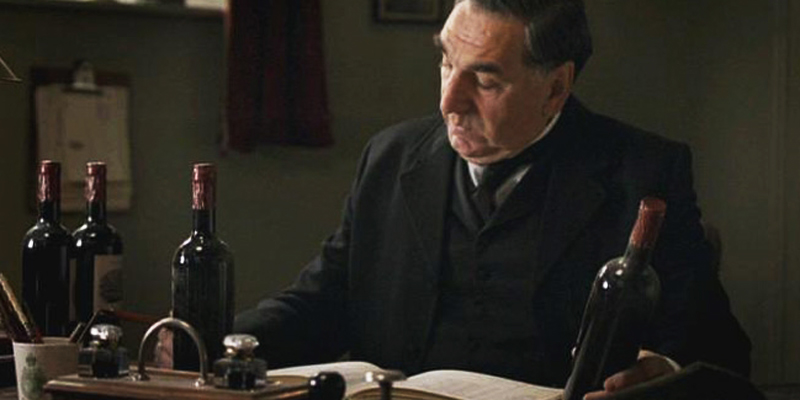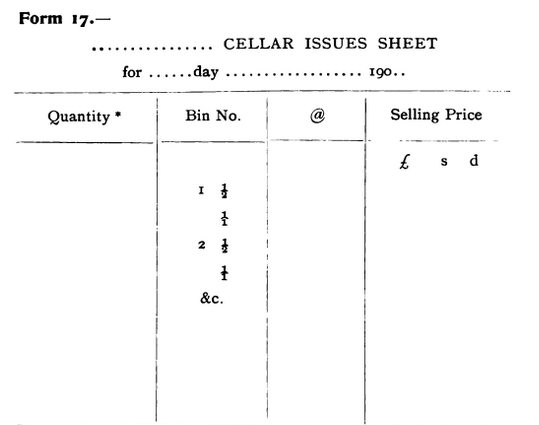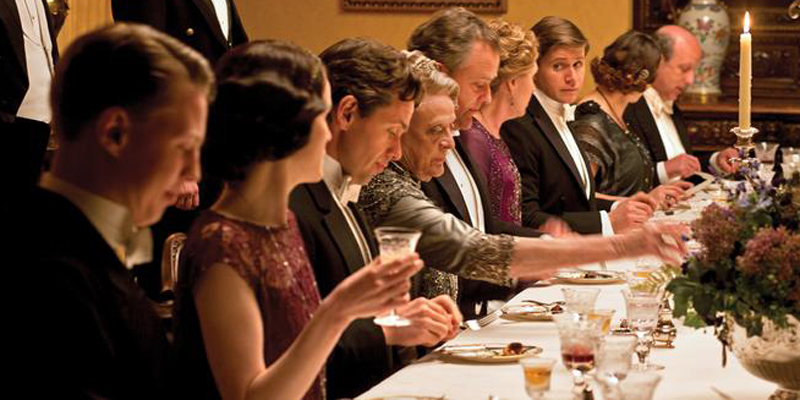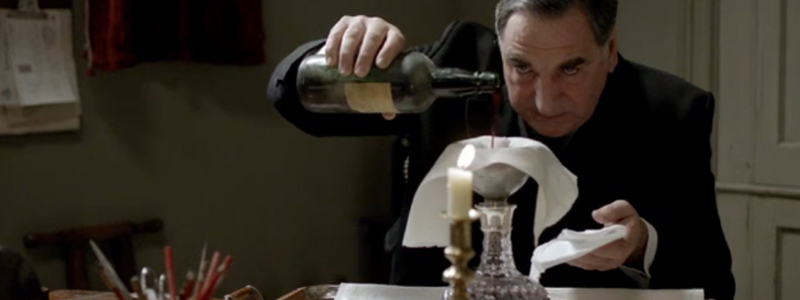Over 10 million people are watching “Downton Abbey” in its fifth season, according to Nielsen, a record high for PBS and the period drama – yep, America is officially obsessed with this British upper-class family. It’s safe to say we’re pretty obsessed with the Crawley family here at VinePair as well. Over the last five years we’ve gotten to know them well and, apart from their inner dealings, relationship struggles and of course monetary trials and tribulations, if there’s one thing we’ve noticed night in and night out, it’s that the Crawleys love to drink. But we wondered, what exactly are the Crawleys drinking and what would it be like to spend an evening both upstairs and down?
To solve this puzzle, we sought out Jennifer Regan-Lefebvre, a professor of history at Trinity College in Connecticut who specializes not only in British history during the time of the show – she actually teaches a class on Downton – but also in the history of drinks during the time period.
“All of us could throw a Downton themed dinner party if we wanted,” said Regan-Lefebvre. “You’ll just need a set of silver fish knives, a copy of the Larousse Gastronomique, a strong constitution, and a trust fund.”
Almost all of the wine drunk in Britain during the period of Downton was consumed by the upper-classes. Because Britain was not a wine-producing country, the libation had to be imported, causing the wine to be quite expensive for most in the middle class and below. With no winemaking tradition of their own, there wasn’t any affordable wine for casual meals as existed in France and Italy; in fact, the average per bottle consumption for most Brits during the time period of Downton was only two bottles per year.
But while most Brits drank very little wine, those in the aristocracy drank barrels of it. That’s because wine consumption was directly related to how wealthy you were – the more money you had, the more you drank. By observing the amount of wine the Crawleys drink on the show, it’s clear they’re quite wealthy, or at least giving the outward appearance as such – no one needs to know the Earl of Grantham isn’t the savviest of investors.
It was expected that for people of the Crawleys’ status, copious amounts of wine should be on hand to lubricate every part of the evening – which makes complete sense when you realize that in these small villages the upper-classes were interacting with each other almost daily; if not for booze, most might have a hard time getting through all that interaction. To ensure there was always plenty of wine to go around, estates like Downton kept extremely large cellars, with incredibly detailed books – at Downton these are kept by Carson – outlining what was in stock and when it was ready to be drunk.

“We know from some nineteenth-century accounts that it was not unusual for aristocratic families to have several thousand bottles in stock in their cellars. Stately homes were treated as semi-public spaces: dinner parties were frequent and usually large, and it was important to be prepared to entertain guests at short notice, as often happens in Downton,” says Regan-Lefebvre. When Sir Robert jokes that Downton is becoming a hotel, there is a lot of truth in his statement. After World War I, several aristocratic families like the Crawleys did indeed open their homes to daytime tourists as well as allow part of their grounds to be used as parks. As Regan-Lefebvre tells us, “Sharing their artwork, architecture and gardens with the public allowed them to claim that they contributed to the public good,” which was incredibly necessary during a time period with such vast schisms between rich and poor.
Another important reason for a well stocked cellar was to ensure you actually still had access to booze in the first place – remember, it was important to stay lubricated, your only entertainment was talking to other people! During World War I, the British government was afraid that alcohol consumption made munitions workers less productive, so liberal politician David Lloyd George passed a Liquor Control Act to restrict public sales and serving of alcoholic beverages. Viewers might recall that Lloyd George was already Lord Robert’s nemesis because he had funded groundbreaking social insurance programs through the taxation of landed estates; we can’t imagine the Liquor Control Act won him many more popularity contests.

So what if you were lucky enough to be invited to Downton? How would the evening flow and what might you drink? While many members of society in London were beginning to start the evening with a cocktail hour, as Lady Rose implores Robert to emulate, at Downton the primary beverage of choice would still be wine, though much of that wine wasn’t the table wine we know, but was instead fortified and these ports and sherries would be what both opened and closed the meal. Champagne was also incredibly popular, and not just for toasts; a symbol of wealth and success, Winston Churchill famously enjoyed Champagne regularly with his lunch.
When you were finally seated for the meal – after at least an hour of chit chat – both the food and wine you’d be served would most likely be French, this meant creamy sauces, and rich dishes. British aristocracy’s penchant at the time for all things French would extend to the menu, which would be written in French, as well as the wine. The meal would most likely start with a soup, move into a fish course and then include one or two meat courses before closing with a few desserts.

Throughout the meal, wine would be paired with every dish, usually selected prior by the head of the house, though Carson often completes this duty at Downton. One might be surprised to learn, however, that the pairings that were normally chosen would not fall in line with the rules so many modern-day wine enthusiasts strictly follow. The Crawleys and their fellow aristocracy simply drank what they liked with what they liked to eat. As Regan-Lefebvre uncovered in her research, “I’ve seen one menu that begins with a sherry and some hors d’oeuvres and moves on to a white Burgundy with soup, then a red Bordeaux with the fish course, then two different Champagnes with light meat dishes, then two vintage red Bordeaux with lamb and roast poultry, then port with ice cream, and finally Champagne again to finish!”
Following the meal, if you were to head downstairs, you would most likely find the servants drinking tea and having an informal dinner that included a simple hot dish like a stew or roast meat, a vegetable side dish or salad, and some cake. While “Downton Abbey” often shows the servants also enjoying wine, that would have been an extreme rarity in real life.
The other minor detail Downton misrepresents when it comes to drinking is how much the women actually took part. In several scenes we see Lady Mary liberally pour herself a glass of whiskey, but drunkenness was extremely frowned upon – of course it was frowned upon by upper-class men who themselves were allowed to be drunk – and considered unladylike. This didn’t mean Mary would abstain from wine at dinner, she too would partake, but after the meal, she’d be much more likely to have a coffee than to join Tom for a glass of Irish whiskey or scotch.

